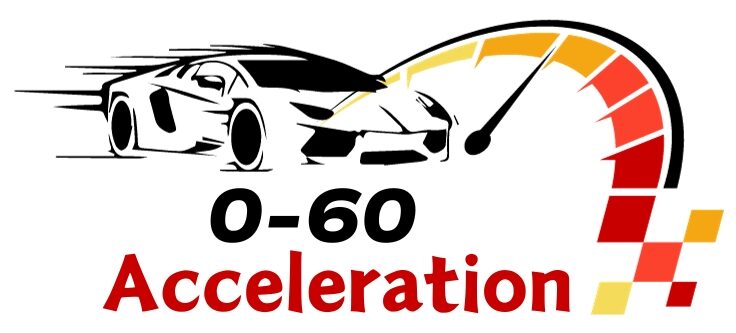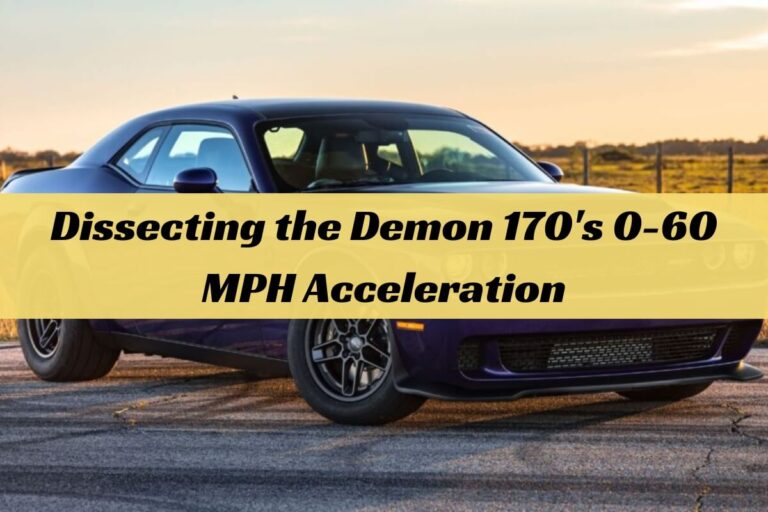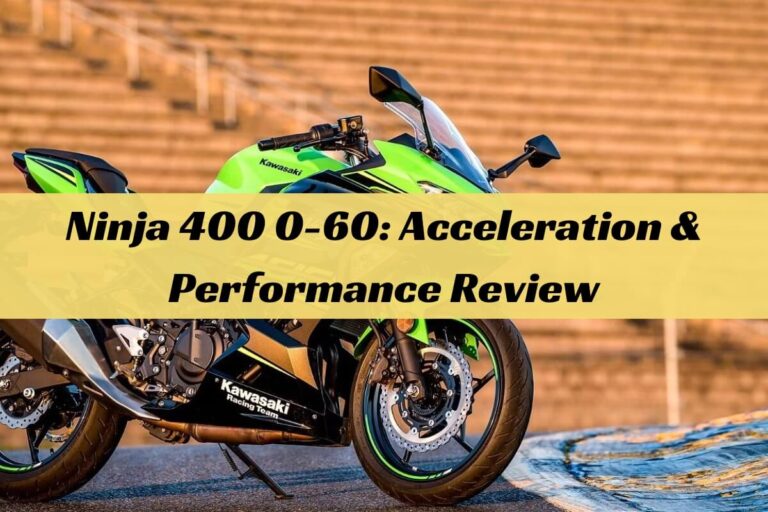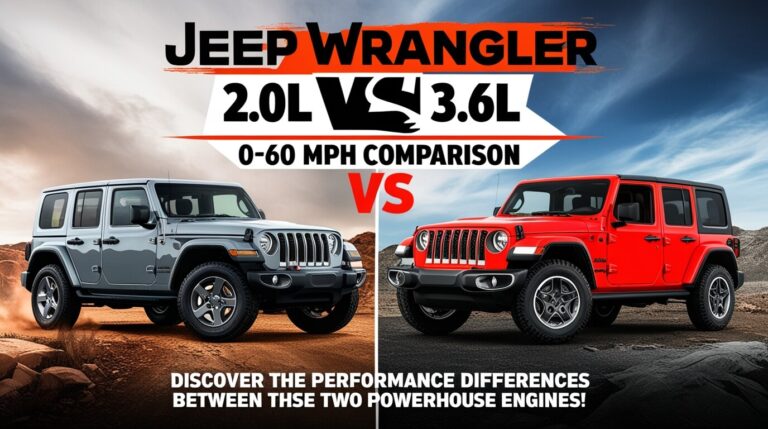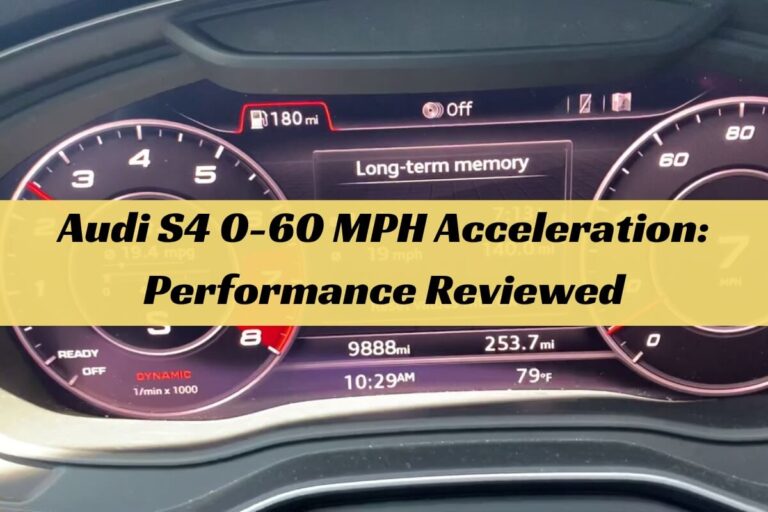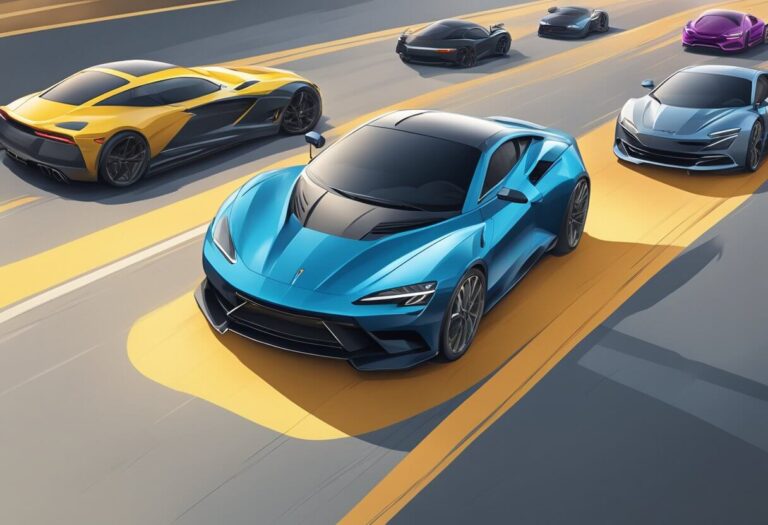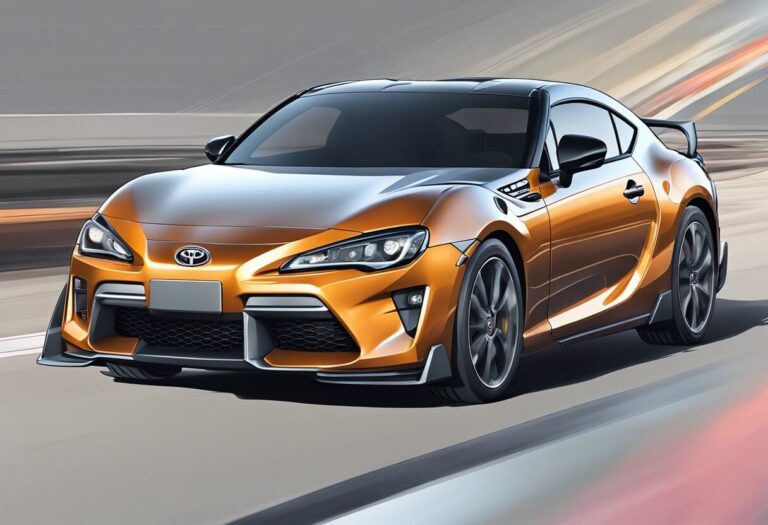
Muscle cars have always been known for their immense power and lightning-fast acceleration. But few can match the sheer force and speed of the Dodge Hellcat. This beastly machine is capable of sprinting from 0-60 mph in an earth-shattering 3.7 seconds according to Car and Driver, making it one of the quickest production cars on the planet. With its supercharged V8 pumping out over 710 horsepower, the Hellcat delivers face-melting acceleration. But just how does it rocket off the line so quickly and leave competitors in the dust?
In this article, we’ll break down the Hellcat’s 0-60 time by looking at key factors like engine specifications, testing conditions, comparisons to rivals, and potential modifications to unleash even greater performance. Strap in and get ready for a wild ride as we explore the incredible acceleration of the Dodge Hellcat!
Hellcat Model Overview
History and Evolution
The Hellcat is a high-performance muscle car produced by Dodge. It was first introduced in 2015 with the Dodge Challenger SRT Hellcat, which quickly became popular for its impressive power and speed. Since then, Dodge has expanded the Hellcat lineup to include the Charger, Durango, and even a Jeep Grand Cherokee.
Over the years, the Hellcat has undergone some changes and improvements. In 2018, Dodge introduced the Hellcat Redeye, which features a more powerful engine and improved aerodynamics. The Hellcat Redeye also has a faster 0-60 time than the standard Hellcat.
Engine Specifications
All Hellcat models are powered by a supercharged 6.2-liter V8 engine that produces over 717 horsepower. The engine is paired with an eight-speed automatic transmission and rear-wheel drive. The Hellcat also features a unique exhaust system that produces a distinctive sound.
The Hellcat’s engine is equipped with a high-performance air intake system, which helps to increase airflow and improve performance. The engine also features forged pistons and connecting rods, as well as a high-strength steel crankshaft.

Performance Variants
The Hellcat lineup includes several performance variants, each with its own unique features and capabilities. The standard Hellcat has a 0-60 time of around 3.5 seconds and a top speed of 199 mph. The Hellcat Redeye, on the other hand, has a 0-60 time of just 3.4 seconds and a top speed of 203 mph.
Other performance variants include the Charger SRT Hellcat Widebody, which features wider tires and improved handling, and the Durango SRT Hellcat, which is the world’s fastest and most powerful SUV.
0-60 Performance Analysis

Acceleration Techniques
The Dodge Hellcat is a high-performance vehicle that can go from 0-60 mph in just a matter of seconds. To achieve the best acceleration times, drivers need to use the right techniques. One of the most important techniques is to make sure the tires are properly warmed up before launching the car. This can be done by doing a burnout or by driving the car around for a few minutes to warm up the tires.
Another technique is to use the launch control system that is built into the Hellcat. This system allows the driver to set the RPM and launch the car at the right moment to get the best acceleration. It is important to note that launch control should only be used on a track or other controlled environment, as it can be dangerous on public roads.
Comparative Performance
The Dodge Hellcat is known for its impressive acceleration times, but how does it compare to other high-performance vehicles? According to various sources, the Hellcat can go from 0-60 mph in as little as 3.5 seconds. This puts it in the same league as other high-performance vehicles such as the Porsche 911 Turbo, Lamborghini Huracan, and Audi R8.
While Dodge claims the Challenger SRT Hellcat can accelerate from 0-60 mph in just 3.7 seconds, real-world acceleration times are dependent on various factors. Road conditions, driver skill level, weather conditions, and other variables can all impact actual acceleration performance. The Hellcat excels in straight-line acceleration tests, but may not match supercars costing twice as much when it comes to overall handling, braking, and track performance.
Testing Conditions and Results

Track Conditions
When testing the 0-60 mph acceleration time of a Hellcat, track conditions play a crucial role in determining the accuracy of the results. The track surface should be dry and free of debris to ensure maximum traction. A well-maintained track with a good grip is ideal for achieving the best results. Additionally, the temperature and altitude of the track can also affect the performance of the vehicle. Lower temperatures and higher altitudes can result in reduced horsepower and slower acceleration times.
Driver Skills
The driver’s skills and experience also play a significant role in achieving accurate 0-60 mph acceleration times. An experienced driver who is familiar with the Hellcat’s performance characteristics can achieve better results than an inexperienced driver. The driver should be able to launch the car smoothly and shift gears quickly to achieve maximum acceleration.
Measurement Equipment
To ensure accurate results, it is essential to use reliable measurement equipment. A GPS-based device such as Racelogic V-box can provide accurate acceleration times. Additionally, a dyno machine can also be used to measure the horsepower and torque of the vehicle. Using both devices can provide a more comprehensive understanding of the vehicle’s performance.
In conclusion, when testing the 0-60 mph acceleration time of a Hellcat, track conditions, driver skills, and measurement equipment play crucial roles in achieving accurate results. By taking these factors into account, one can achieve the best possible results and gain a better understanding of the vehicle’s performance.
Comparison With Competitors

Direct Competitors
The Dodge Challenger Hellcat is a formidable muscle car that can go from 0 to 60 mph in just 3.6 seconds. However, it faces stiff competition from other high-performance vehicles in the market. One of its direct competitors is the Ford Mustang Shelby GT500, which boasts a 0-60 mph time of just 3.3 seconds. The GT500 is powered by a 5.2-liter supercharged V8 engine that produces 760 horsepower and 625 lb-ft of torque. It is also lighter than the Hellcat, which gives it an advantage in terms of power-to-weight ratio.
Another direct competitor of the Hellcat is the Chevrolet Camaro ZL1 1LE, which has a 0-60 mph time of 3.4 seconds. The ZL1 1LE is powered by a 6.2-liter supercharged V8 engine that produces 650 horsepower and 650 lb-ft of torque. It also has a track-tuned suspension and aerodynamics that make it a formidable opponent on the race track.
Market Segment Analysis
In the high-performance muscle car segment, the Hellcat faces competition not only from other American muscle cars but also from European and Japanese sports cars. One of the most popular competitors in this segment is the Porsche 911 Turbo S, which has a 0-60 mph time of just 2.6 seconds. The 911 Turbo S is powered by a 3.7-liter twin-turbocharged flat-six engine that produces 640 horsepower and 570 lb-ft of torque. It also has all-wheel drive and advanced aerodynamics that make it a true performance machine.
Another competitor in this segment is the Nissan GT-R Nismo, which has a 0-60 mph time of just 2.5 seconds. The GT-R Nismo is powered by a 3.8-liter twin-turbocharged V6 engine that produces 600 horsepower and 481 lb-ft of torque. It also has all-wheel drive and advanced electronics that make it one of the most capable sports cars on the market.
Overall, while the Hellcat is a powerful and capable muscle car, it faces stiff competition from other high-performance vehicles in its segment. Buyers looking for the ultimate performance machine should consider not only American muscle cars but also European and Japanese sports cars.
Modifications and Upgrades
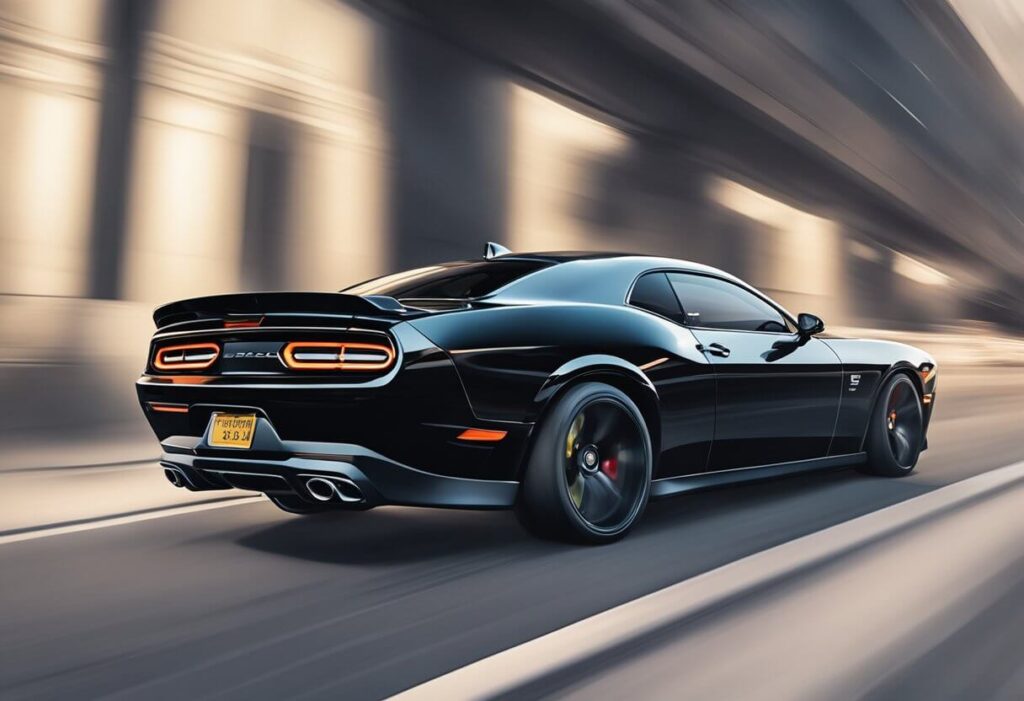
Factory Options
The Dodge Challenger Hellcat comes with a powerful supercharged 6.2-liter HEMI V8 engine, which can produce up to 717 horsepower and 656 lb-ft of torque. This engine is paired with an eight-speed automatic transmission, which can shift gears quickly and smoothly. The Challenger Hellcat can accelerate from 0 to 60 mph in just 3.7 seconds, making it one of the fastest muscle cars on the market.
Aftermarket Enhancements
For those who want to take their Challenger Hellcat to the next level, there are several aftermarket enhancements available. Here are some popular options:
- High-flow catalytic converters: These can increase the flow of exhaust gases, which can improve performance and sound.
- High-flow mid pipes: These can further increase the flow of exhaust gases, which can improve performance and sound even more.
- High-flow fuel injectors: These can deliver more fuel to the engine, which can increase horsepower and torque.
- High-flow air induction system: This can increase the amount of air that the engine can breathe in, which can increase horsepower and torque.
- Upgraded headers: These can improve exhaust flow and reduce backpressure, which can increase horsepower and torque.
- Upgraded pulleys: These can increase the speed of the supercharger, which can increase horsepower and torque.
When modifying a vehicle’s engine, it is crucial to select high-quality parts from reputable manufacturers. The engine may also need to be professionally tuned after installation of aftermarket parts to ensure optimum performance and reliability. Improper modifications or low-quality components can potentially damage the engine or reduce its lifespan. Work should be completed by a qualified mechanic to guarantee modifications are completed properly.
Owner and Expert Reviews
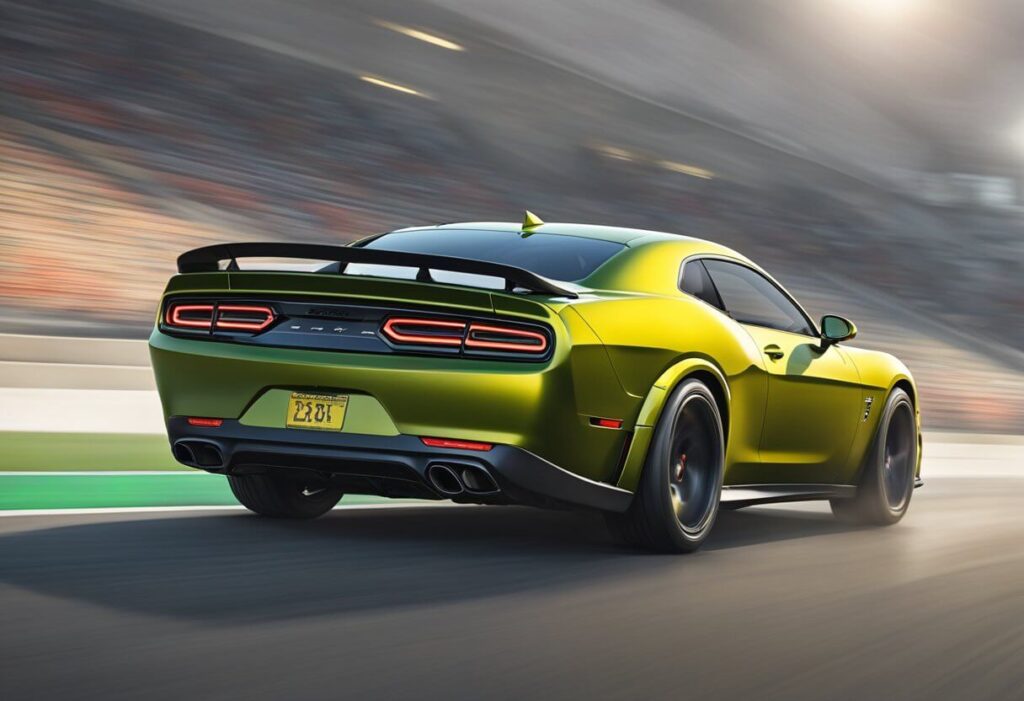
Professional Reviews
According to Car and Driver, the 2015 Dodge Challenger SRT Hellcat can reach 60 mph in 3.6 seconds and complete a quarter-mile in 11.7 seconds at 126 mph. The magazine also notes that the Hellcat is a bit slower than the Shelby GT500, which completes the same run in 3.5 seconds and 11.6 seconds at 125 mph, respectively.
However, Edmunds reports that the 2022 Dodge Challenger SRT Hellcat can accelerate from 0 to 60 mph in just 3.4 seconds, which is faster than the 2015 model. The 2022 Hellcat also has a top speed of 203 mph, according to the same source.
Owner Testimonials
Some Hellcat owners have reported achieving 0-60 mph times of less than 3.5 seconds, while others have reported times of around 4 seconds. One owner on the Dodge Challenger Forum asked other Hellcat owners what their real-world 0-60 times were and received responses ranging from 3.3 seconds to 4.1 seconds.
Many owners praise the Hellcat’s acceleration and overall performance, but some have noted that the car can be difficult to handle at high speeds. Additionally, some owners have reported reliability issues with their Hellcats, including transmission problems and engine failures.
Future of Hellcat Performance
Industry Trends
The performance car industry is always evolving, and the Hellcat is no exception. One trend that has emerged in recent years is the push towards electrification. Dodge has already announced plans to release an electric version of the Hellcat platform, boasting a range of up to 400 miles and 600 horsepower. This move towards electrification will not only increase efficiency but also provide a new level of performance.
Another trend in the industry is the increasing use of lightweight materials. The Hellcat is already a relatively lightweight car, but the use of materials such as carbon fiber and aluminum could further improve its performance. These materials could help reduce weight and increase agility, resulting in even faster acceleration and handling.
Technological Advancements
As technology continues to improve, so too does the performance of the Hellcat. One area where advancements have been made is in transmission technology. The latest Hellcat models come with either a six-speed manual or an eight-speed automatic transmission. These transmissions have been designed to improve acceleration times and provide smoother shifting.
Another area where technology is making a difference is in the development of new tires. Hellcat models come with high-performance tires designed to provide maximum grip and handling. However, advancements in tire technology could lead to even better performance in the future.
So, the future of Hellcat performance looks bright. With the industry trends towards electrification and lightweight materials, as well as advancements in transmission and tire technology, the Hellcat is poised to continue its reign as one of the fastest and most powerful cars on the market.
